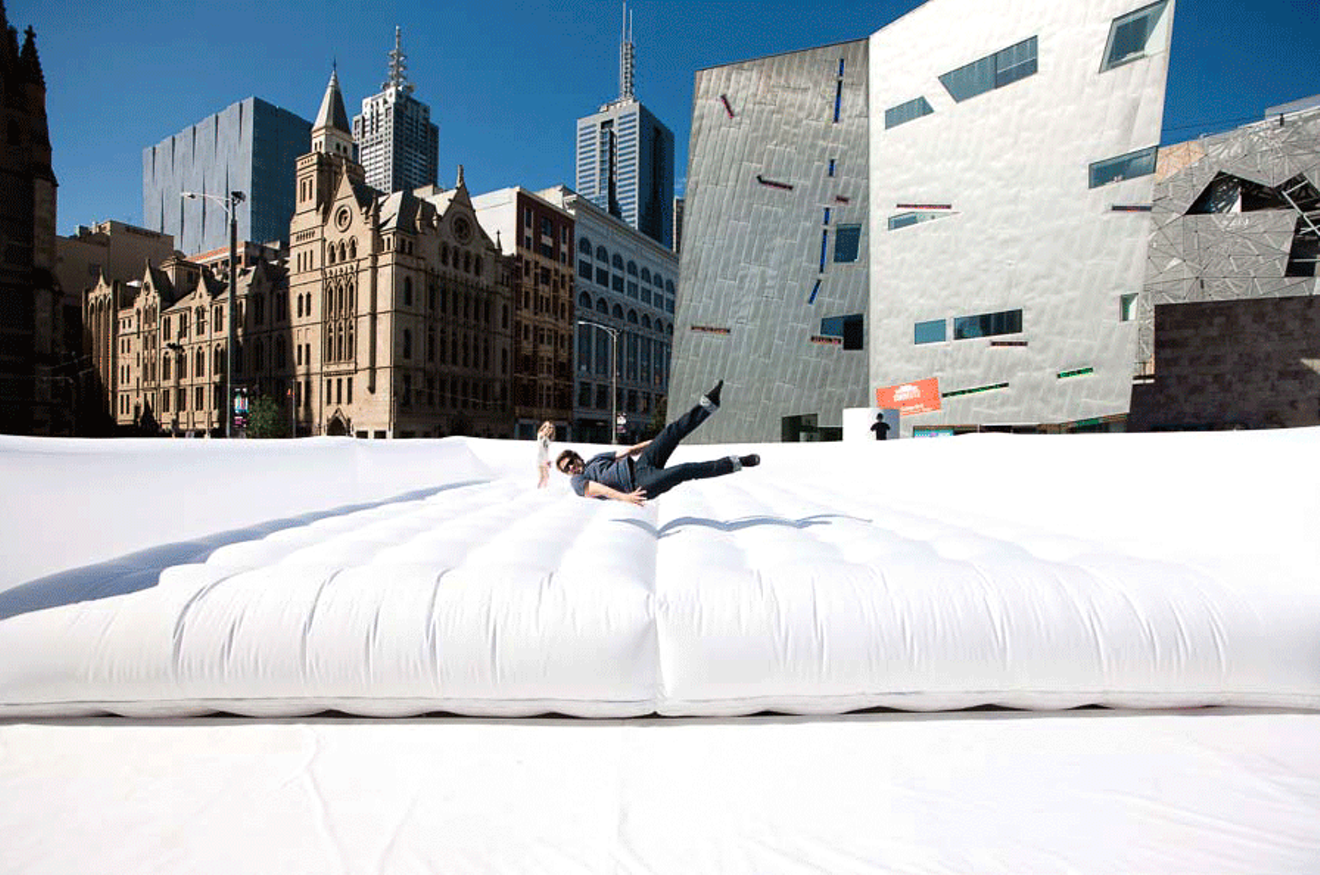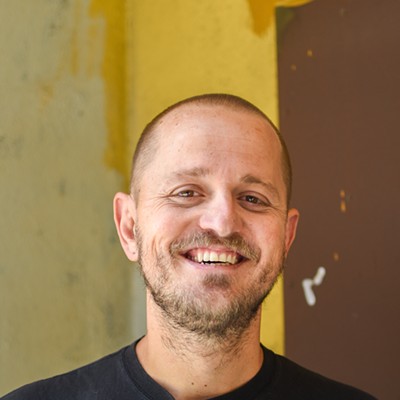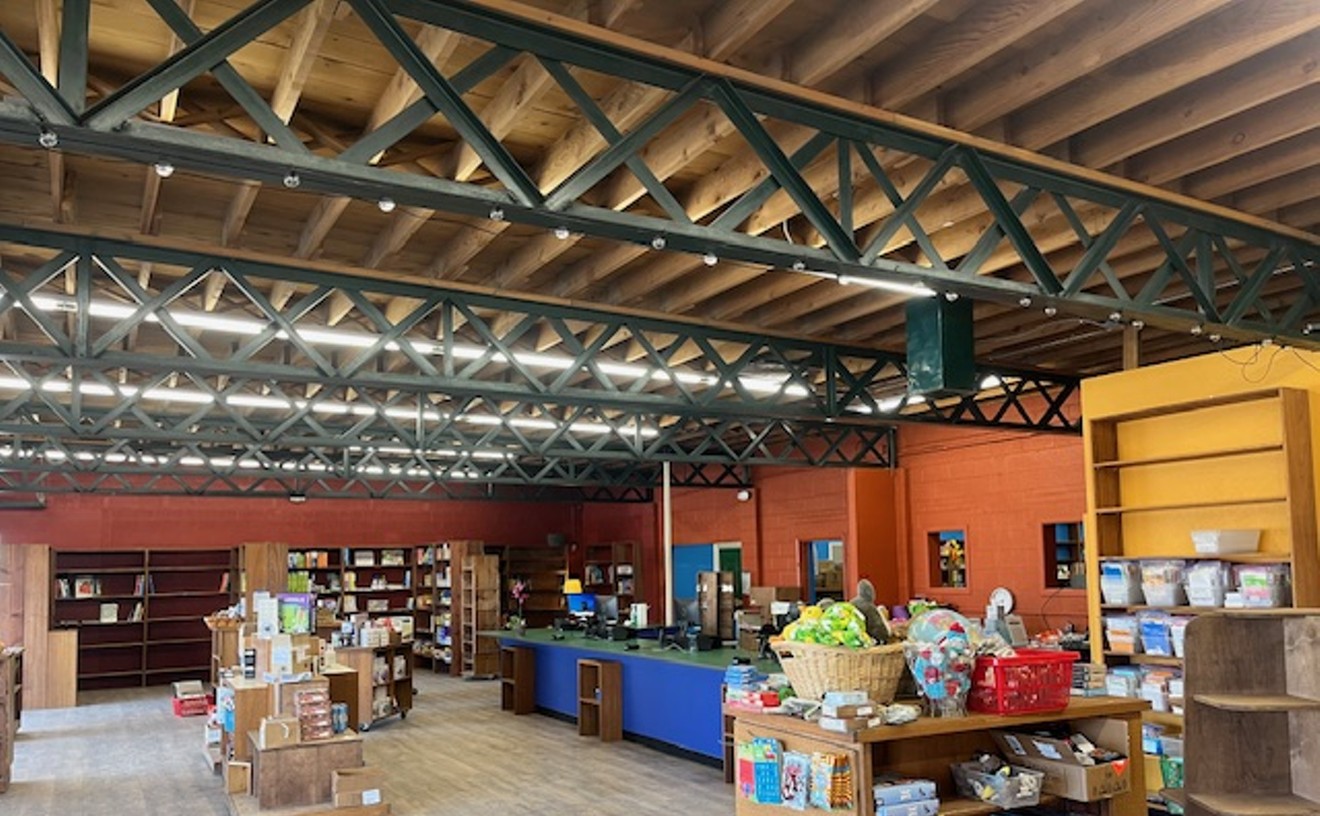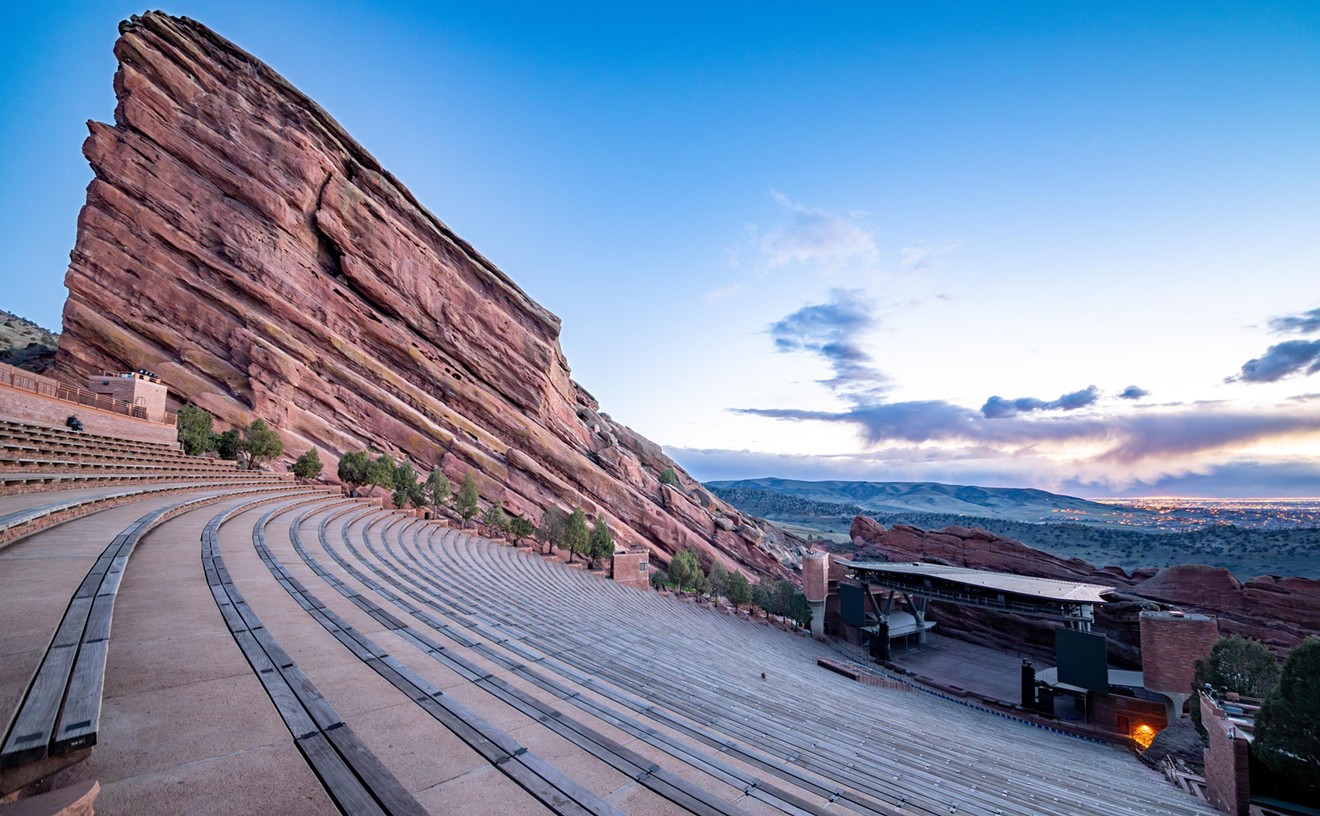Black Cube, Denver's nomadic contemporary art museum, announced its 2018 lineup of five fellows on Monday, January 29. The choices signal the institution's shift from boosting emerging artists to helping establish Denver as an internationally recognized contemporary arts hub.
The prestigious 2018 class includes British artist Stuart Semple, whose Happy City installation will take over Denver in late spring/early summer in a sprawling collaboration with the Denver Theatre District; Mexican artist Alejandro Almanza Pereda, whose work explores danger; and two Denver-based artists, performer Jaimie Henthorn and artist Devon Dikeou, perhaps best known around town as co-founder and curator of the Dikeou Collection. Most notably, Black Cube will be hosting Czech artist Jiri Kovanda in his first U.S. exhibit; Kovanda established his reputation with quiet, subversive works he created in Prague in the 1970s, when the state prohibited acts of defiance in public spaces.
Since Black Cube formed in 2015, it has recruited a host of emerging local artists as fellows, including Derrick Velasquez, Joel Swanson and Laura Shill, who have been associated with TANK Studios and have all exhibited at the Museum of Contemporary Art Denver. Each year of Black Cube classes has taken on a different theme, from cultural interventions to ceramics and social-practice and performance art. "This year there will be a nice balance between physical art objects and art experiences," says Black Cube director and chief curator Cortney Lane Stell.
In past years, the museum has sought racial, ethnic, gender and cultural diversity when choosing fellows (this year's selection has notably less racial diversity than prior classes), but Stell points out that by tapping into the same pool of young Denver artists, Black Cube has risked being viewed as cliquish. To shift things up, which is required by the museum's mission to experiment, Stell chose artists with well-established international reputations, many of them exhibiting at MoMA. Even her current Denver picks fall outside her usual stable.
As part of her attempt to build bridges between the global art world and Denver's scene, Stell will aid Dikeou in taking a solo exhibition, including an installation based on First Lady Pat Nixon's room in the White House with an air conditioner and fireplace running simultaneously, to the Centre for Contemporary Art Futura in Prague; in turn, Stell will work with Futura curator Michal Novotny to orchestrate a game in Denver with Kovanda, who will carry materials for an installation here in a backpack. The two curators will determine a Mile High site where Kovanda will work, presenting him with the challenge of creating a public piece on the spot.
Both Dikeou and Kovanda may have challenges communicating their visions across international borders, Stell says. Dikeou's work is decidedly rooted in Americana; Kovanda's performances are so subtle that Stell fears they may be lost on Denver audiences, who are accustomed to "big bold blue things," as she describes the spectacle-driven, kitschy public art dominating the Mile High landscape.
Working with Semple, Black Cube is helping to execute one component of his Happy City citywide installation: an "Emotional Baggage Drop" at Union Station, where passersby will be invited to confess their deepest secrets. Stell says the project has thrilled the mental-health community and made Black Cube's insurance agents and lawyers nervous, fearing that someone might confess something that would leave the project legally liable.
The project Stell is working on with Henthorn is an ambitious collaboration of the artist, the museum, the Air Force Academy and the Colorado Springs Fine Arts Center, which looks at the relationship between military dance, pop culture and collective versus individual identities.
In weighing priorities, Stell says Black Cube is constantly negotiating how much of its work should be done inside Denver and how much should be focused on other places. For the partnership with Pereda, which is thus far the most undefined of all, there are two ideas under consideration: "One would be buying a plot of land near Guadalajara and producing a permanent sculpture," she notes, "and the other is bringing him to Denver to do something at the Black Cube headquarters," a massive, recently purchased building in an industrial neighborhood in Englewood. Stell is still conjuring up ways to use the location without sacrificing the nomadic nature of her project.
It's not just Black Cube that's emerging as a major Denver player around the globe; so are the artists. "All of these projects are growth moments for artists," Stell says, noting that Black Cube doesn't encourage its fellows to do the same-old-same-old. When you're a fellow with the project, "you leap into the unknown a bit."
What makes Black Cube such an essential force in this city — one that Stell hopes to continue to fund through curatorial collaborations with such well-funded, large-scale institutions as the Boulder Museum of Contemporary Art, MCA Denver and the Denver Art Museum — is that Stell's not just forming alliances between the local scene and the international art world, but she's doing so while encouraging radical experimentation to help push artists into new territory.
It is through her mix of radical imagination and institutional know-how that Stell is garnering respect from both art-world brass and grassroots artists, and building her project's prestige will help the profile of this city's creatives — even those who may be grumbling that they weren't included in this year's class.
"I like being a change-agent, personally," Stell says of her art. "And I also really like to show art that doesn’t always look like art, so people are surprised about what art can be."
Through Black Cube's 2018 class, perhaps the art world will be surprised by what Denver can be.
[
{
"name": "Air - MediumRectangle - Inline Content - Mobile Display Size",
"component": "12017618",
"insertPoint": "2",
"requiredCountToDisplay": "2"
},{
"name": "Editor Picks",
"component": "17242653",
"insertPoint": "4",
"requiredCountToDisplay": "1"
},{
"name": "Inline Links",
"component": "18838239",
"insertPoint": "8th",
"startingPoint": 8,
"requiredCountToDisplay": "7",
"maxInsertions": 25
},{
"name": "Air - MediumRectangle - Combo - Inline Content",
"component": "17261320",
"insertPoint": "8th",
"startingPoint": 8,
"requiredCountToDisplay": "7",
"maxInsertions": 25
},{
"name": "Inline Links",
"component": "18838239",
"insertPoint": "8th",
"startingPoint": 12,
"requiredCountToDisplay": "11",
"maxInsertions": 25
},{
"name": "Air - Leaderboard Tower - Combo - Inline Content",
"component": "17261321",
"insertPoint": "8th",
"startingPoint": 12,
"requiredCountToDisplay": "11",
"maxInsertions": 25
}
]
















